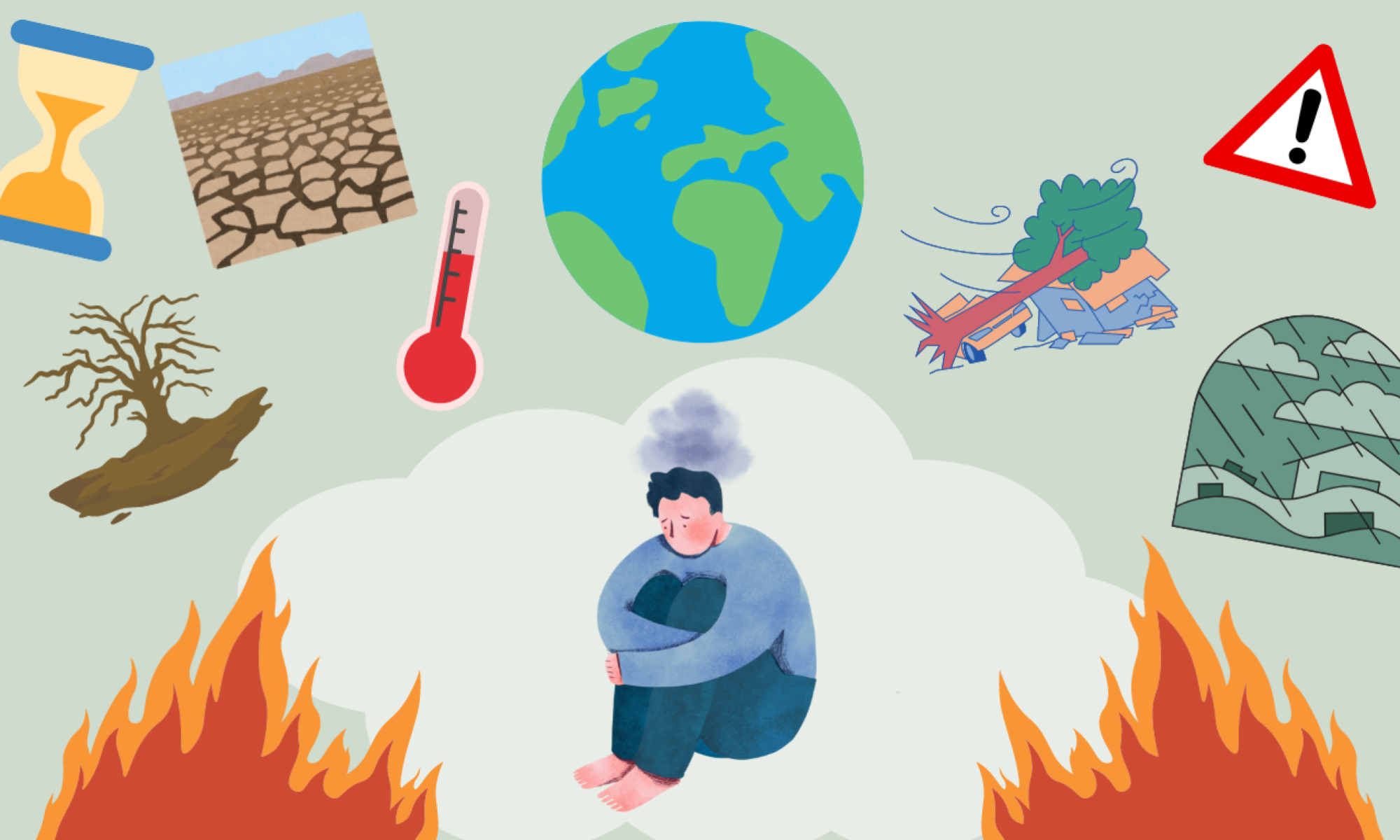Looking out the window of her childhood home the night she got back to Kihei, Hawaii last summer, Alara Berkmen saw flashes of red coming from nearby Lāhainā. She didn’t think much of it at the time.
“It had been bad before, worst case scenario I thought they’d close the road and that’s it,” she said.
But the news the next morning told a different story. Historic wildfires were raging on the island, which ended up resulting in more than 100 deaths.
Berkmen, a sophomore at USC, happened to be home for a short stint after working in L.A. for most of the summer. But she had to go back to school just a few days later.
“I had classes all of a sudden and I realized I didn’t process anything,” she said. “I kept thinking about home, a lot of my friends started school late so they were still there and helping out and I couldn’t do anything.”
In 2023 alone, there were a record 28 climate-related disasters globally that caused $1 billion or more in damage, according to the National Oceanic and Atmospheric Administration. These disasters include flooding, hail, tropical cyclones, tornados, winter storms, wildfires and droughts.
As climate-related disasters increase, more people are being directly impacted by climate change. Whether or not they are aware, 85% of the world’s population has been directly impacted by human-driven climate change. These impacts could range from extreme cases of climate-related disasters to more subtle air quality issues that negatively affect respiratory health.
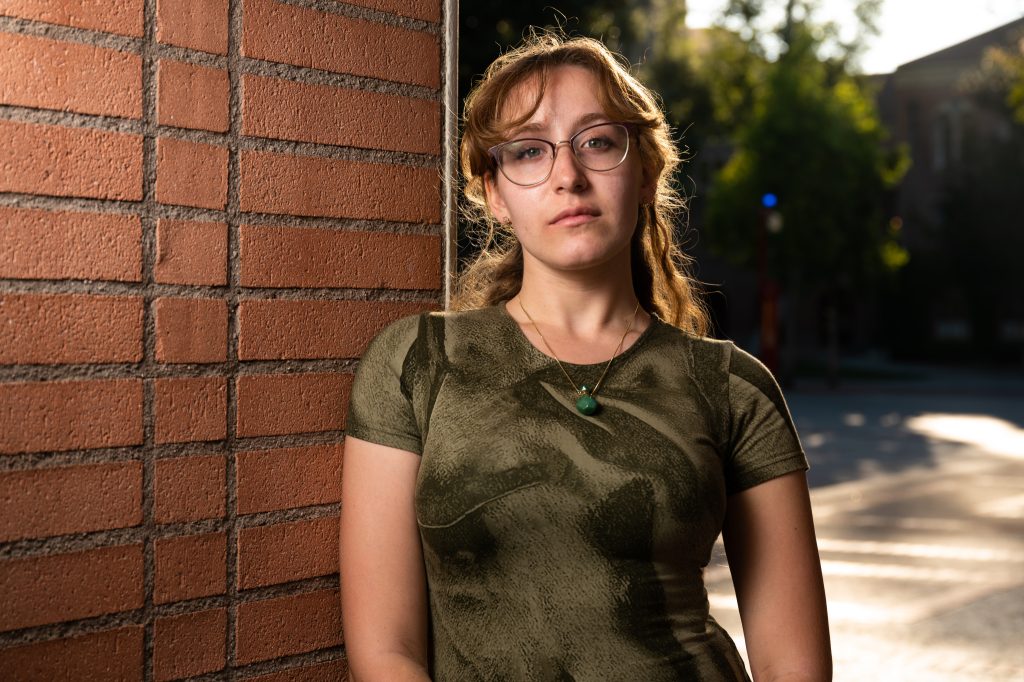
Berkmen said the fires have weighed heavily on her mental health ever since.
“I kept wondering what else the government is going to do to mess up the island further,” she said, mentioning the decision by county officials to bury toxic waste from the fires in a coastal enclave a few hundred yards from the Pacific Ocean. “What are the long-term effects of that, what if there’s another fire that burns the toxic waste?”
Now-retired journalist and educator Robert Greenway pioneered research on the relationship between climate change and mental health when he was a student at the University of Washington in the 1950s. In 1995, historian Theodore Roszak built on Greenway’s research and dubbed the term “climate anxiety.”
“You see the news articles that go out and you see what they write and you compare it to what you said or what you’ve experienced and what you’ve heard people experience,” Berkmen said. “But you can never really adequately explain it to other people. Which makes me think, what have I missed from other stuff like this, that someone just couldn’t translate into words, maybe because they’re frustrated or didn’t know enough. It’s not anyone’s fault, it’s just hard to get across the gravity of it.”
Researchers of a 2021 study published in “The Lancet Planetary Health” surveyed 10,000 young people worldwide, and 45% of respondents reported that their feelings about climate change negatively affected their daily life and functioning.
“A fear for my future kind of hangs over a lot of things,” said Georgianna Fischer, a senior at the University of New Hampshire. “I obviously don’t try and think about that all the time, but it’s definitely a big existential fear of mine. It’s a weight that I feel, for what’s going to happen in the future and what we can do to ensure a livable future for everyone.”
Fischer was part of the first-ever youth-led class-action climate lawsuit against the state of Montana for failing to consider climate change when enacting new legislation. The state trial court decided in favor of the plaintiffs last August, but the landmark victory is up in the air again because Montana blocked the lawsuit in January. Now, Fischer will have to go through more oral arguments.
Fischer has been passionate about the environment since high school when she realized how the climate was changing around her.
“The decrease in snowpack was like a big part of those impacts, I had been seeing these winters that were warmer and less snow year by year,” she said. “And there was one year where we had some big fires in Montana. It was pretty dry, and so we had these big wildfires around and we were getting a lot of smoke. We had to wear a full mask outside. I just remember looking across the street from the gym I was in and not even being able to see the buildings on the other side of the road.”
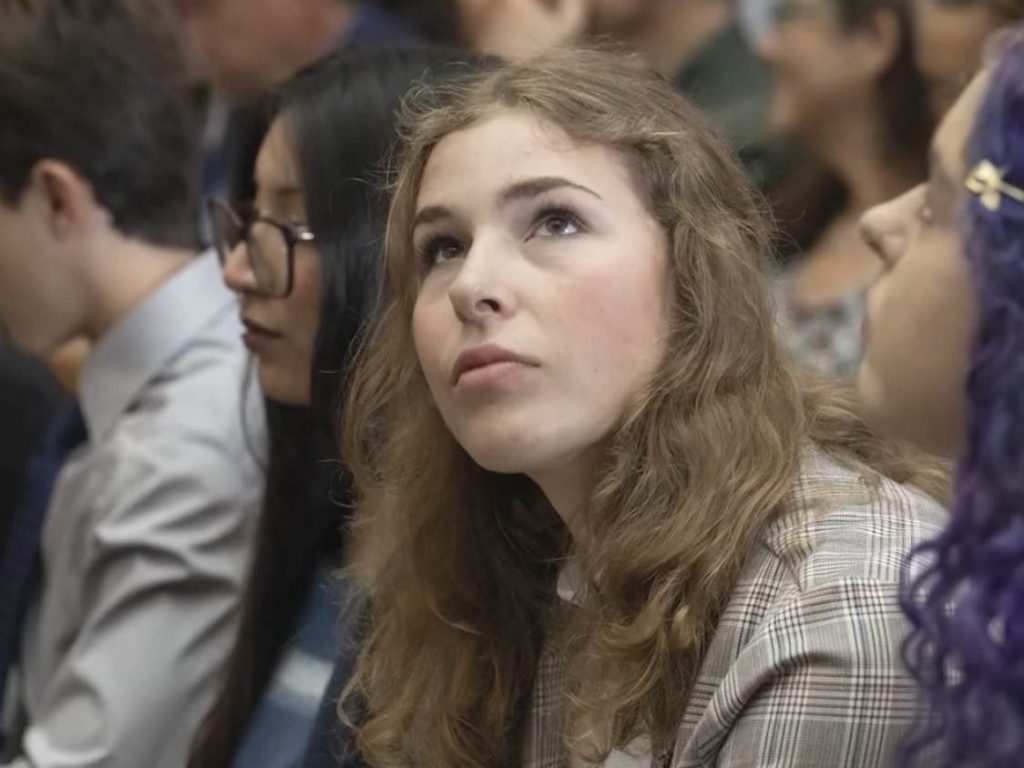
One-third of young people in the United States who had directly experienced a climate-related event indicated in a survey they were scared to have children because of climate change. Only one-fifth of participants who had not experienced a climate-related event said the same.
Harvard University sophomore LeMonie Hutt knew the effects of climate change firsthand from an early age. As part of the Indigenous Hoopa tribe and the Yurok and Karuk tribe, she grew up on the Hoopa Valley Reservation in northern California near the Oregon border. She’s heard stories throughout the years about how different the land used to look.
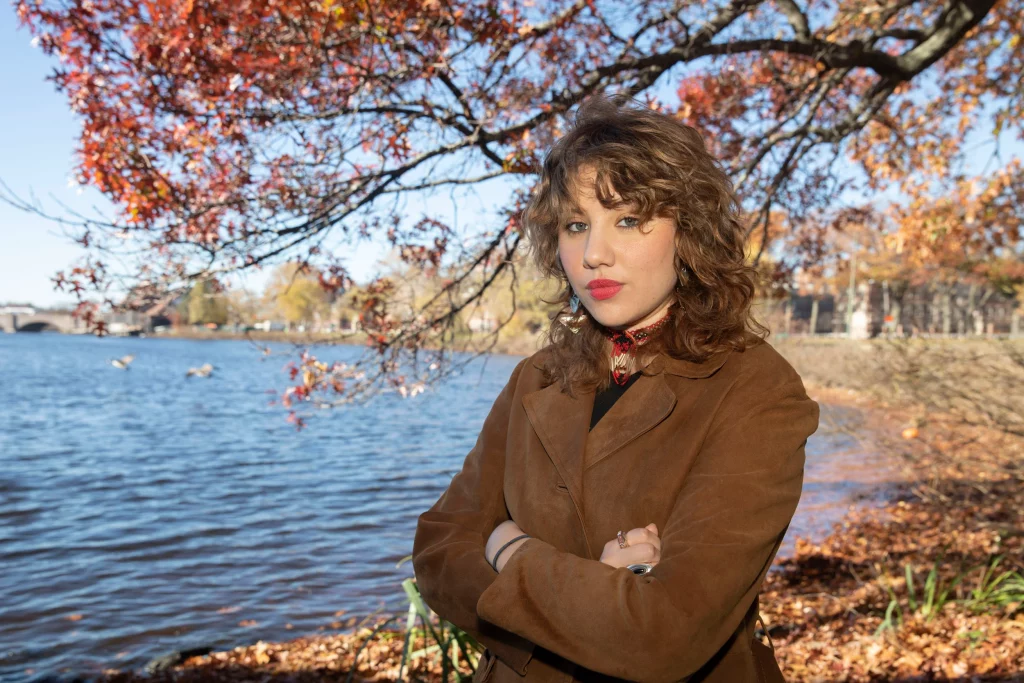
“I heard stories from my grandmother’s era where they would say you could walk on the backs of the salmon in the river,” Hutt said. “That’s how many fish there were.”
Now, they’re lucky to catch one fish.
“Part of that is due to government commodities and not being able to like, actually have the rights and legal rights to fish and hunt that were taken away from us,” she said. “And then now that we have those rights restored to us, where we are able to fish and hunt, there’s the climate change aspects to that.”
Hutt said that her tribe, and many other Indigenous tribes, face high rates of malnutrition and obesity due to a lack of nutritious food sources, which has also led to high suicide rates. According to the U.S. Department of Health & Human Services Office of Minority Health, American Indian/Alaska Native adults have a 20% higher death rate from suicide compared to non-Hispanic white adults.
“My tribe is 3,000 people, which is very small compared to what we historically were,” Hutt said. “And so when you see the state of the river, or the state of the environment that your culture inherently is dependent on, it creates this fear that your identity and who you are, and your culture isn’t going to last very long. It’s the same type of fear as the fear of death.”
Ecopsychology research is rapidly evolving as the effects of the climate crisis increase. Barbara Easterlin, a former clinical professor of psychology at UC Berkeley, is taking a break from her regular practice to focus on the impacts of climate change on mental health. The intersection has always been her specialty: In the 1980s, she earned a master’s degree in climate psychology.
“Because I’ve kept up with the literature overtime, it became clear that nature is suffering,” she said. “So if nature suffers, our mental health is gonna suffer — it’s a direct relationship.”
In August 2011, Hurricane Irene was wreaking havoc on the Northeastern United States. In USC junior Joyce Jiang’s home state of New Jersey, damage costs from the storm totaled about $1 billion and seven people died.
“It did a lot of damage to our basement and first floor which was financially a huge burden,” she said, “all the way down to the sheetrock because the flooding sat there for a while and we didn’t want it to mold.”
Learn more about climate change and mental health with climate-aware therapist Barbara Easterlin:
This past December, Jiang’s family experienced even more flooding from a bad rainstorm — twice, two weeks apart. They went through two washers and dryers and had to throw out their ruined belongings twice in such a short amount of time, all while trying to manage their family business.
“It was tough being in California,” Jiang said, “because obviously I couldn’t actually be there to help even if it was just organizing. Sometimes it made me feel a bit guilty.”

Irene was the first hurricane that made landfall in the state for more than 100 years. But since then, New Jersey has been hit by Hurricane Sandy — causing $30 billion in damages and 12 deaths — and Hurricane Ida — which caused more than $2 billion in damages and 30 deaths. In 2023, climate disaster recovery costs nationwide totaled more than $2.6 trillion in 2023.
“As I got older, it just became more of a burden on my shoulder,” Jiang said. “When I was younger. I was just like, ‘Why is the power out, what’s going on, there’s fish in the road?’ But now I’m like, ‘What the hell is going on?’”
Severe flooding has also increased around the world. In August 2022, Pakistan declared a national emergency due to an intense flood. It was the country’s deadliest natural disaster and one of the most costly disasters in world history.
“It was super devastating to see the impact and the consequences it had on a country that’s already really disadvantaged in terms of resources,” said Abeerah Siddiqui, a senior at USC and the president of the Pakistani Student Association.
Pakistan only contributed to 0.9% of global greenhouse gas emissions in 2021, yet faces severe, disproportionate risks because of the climate crisis. Germanwatch’s Global Climate Risk Index ranked the country in eighth place for bearing the most climate change impacts from 2000-2019. Siddiqui visits Pakistan frequently because the majority of her extended family lives there.
“A lot of people tend to not recognize the dangers or the impending consequences of climate change when it’s not directly affecting them,” Siddiqui said. “The flooding highlighted that you have to be aware of what’s going on in the world, because ultimately, it will impact you at the end of the day.”
In addition to the physical, mental and financial effects of climate change, the U.S. Environmental Protection Agency recognizes climate change as a threat to people living with chronic health conditions. Liv Schroeder, a junior at Georgetown University, felt the immediate effects of climate change when she had to go to the emergency room during a heatwave in Seattle in the summer of 2021. Schroeder has a chronic kidney condition that makes her more susceptible to dehydration.
“That was definitely the time that l was like, ‘Oh, shit, this is actually real, and this is gonna have consequences for me,’” she said.
Since then, she’s noticed the Seattle climate gets worse and more dangerous each year.

“It’s been a big factor in my mental health,” she said. “I think Gen Z as generation is very unique, because I think we’re very receptive to trying to be politically engaged and figuring out the solution to these problems, but like, when you’re a kid before you can vote you’re just like, ‘Oh, the people in charge are just not doing what they need to be doing.’”
Easterlin is a pioneer of climate-aware therapy. She co-founded a certificate for therapists who want to better understand how climate change may be affecting their clients.
Click each icon to learn more about ways to manage climate anxiety:
“We treat climate change as a real threat,” Easterlin said. “We try to help a person share what personally feels most threatening about it for them — and that varies from person to person — and be able to validate those feelings and elevate the topic for them. The end goal, of course, is not just self regulation and feeling happier and more satisfied in your life like it is generally in therapy, but it’s also to find one’s thread in what they’d like to do about it.”
Getting involved in climate action is one of the most effective ways to combat climate anxiety, Easterlin said.
“It’s not for us to dictate what a person does, but it’s more to help them find their place and their agency because that helps us feel better, is feeling a sense of agency in our own lives about the world around us,” she said.
With the help of the Pakistani Student Assembly, Siddiqui spread awareness of the flooding to the USC community.
“We provided resources and links to where people could go and donate because that money was then, as far as we had understood, going back to the local communities to help them rebuild since a lot of people’s livelihoods had been impacted,” she said. “So more of the ground level work, and then we also just generally were more focused on highlighting that this is happening.”
Schroeder served on the national coordinator team of Fridays for Future US — a local branch of the climate strike movement that activist Greta Thunberg started in Sweden — for three years. She’s now an Intern with the Natural Resources Section within the Department of Justice Environment and Natural Resources Division.
“People are kind of realizing that things are not proceeding as normal, and I think that’s really frightening,” she said. “Especially when you think about something like having kids, for the most part that’s kind of something that we just grew up expecting to do, and now like to be faced with the fact that this actually is a serious consideration.”
Hutt has been involved in environmental advocacy since she used to go to California Water Board meetings with her mother.
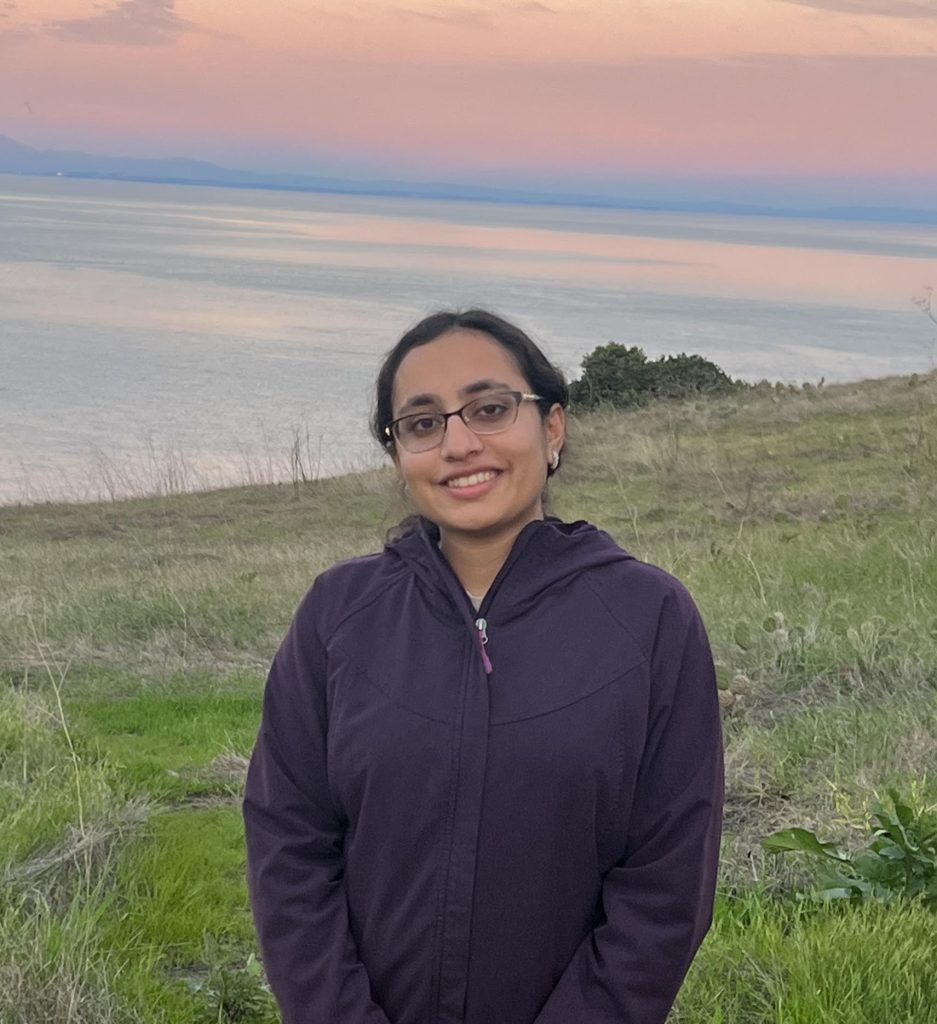
“Fear is that motivator, unfortunately, a lot of the time, to be involved in environmental advocacy, to stand up for rights,” she said. “I was deeply afraid of my culture disappearing, I was deeply afraid of seeing the river this way, so I think a lot of my coping is being as involved as I am.”
Jiang said that it’s important for people to remember that, at this point, many people have faced the direct impacts of climate change in some way.
“Everyone knows that natural disasters exist, but I think it’s more important for them to understand that people are actually experiencing this, especially people that they’re friends with,” Jiang said. “It’s closer than you think.”
